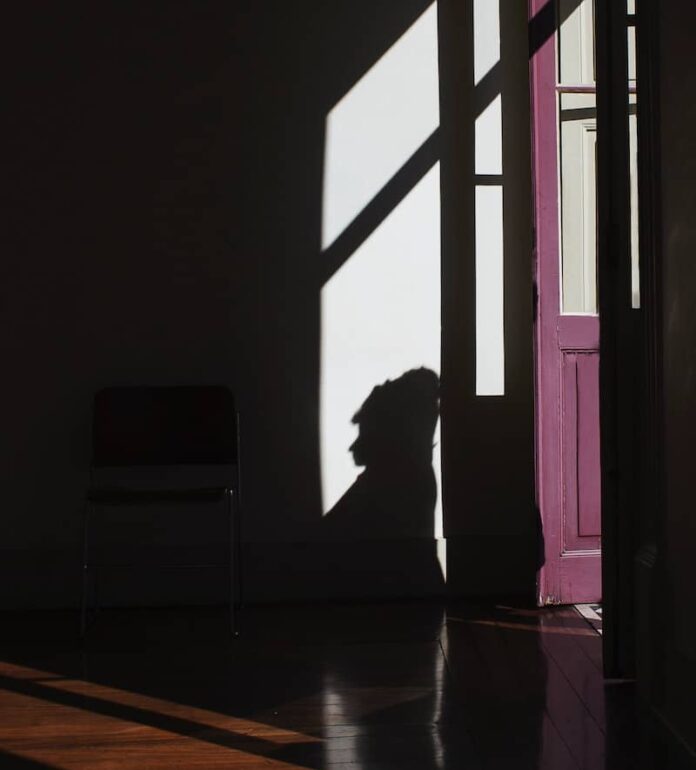Prospective homebuyers are unable to compete in today’s market as investors continue to buy up homes and turn them into rental properties.
The past couple of years haven’t been easy on first-time homebuyers. From being unable to view homes in person due to health restrictions, to having homes go off-market before buyers could even get an offer in, first-time homeownership has never been harder to achieve.
According to data obtained by Fortune Magazine, the typical home price has increased 20.3% year-over-year. This comes at a time where inventory is scarce and homes are staying on the market for an average of just 18 days.
Realtors in today’s increasingly competitive market know it’s better to set realistic expectations from the beginning than to promise results they aren’t likely to deliver.
Putting thousands of dollars towards non-refundable fees and offering tens of thousands above asking price are some of the harsh realities prospective buyers must face to even have their offers considered.
Difficult buying conditions are partially due to low housing inventory, but they’re also a reflection of a growing market trend—investors putting in hard-to-deny cash offers on homes and then turning them into rentals. This tendency is said to further exacerbate the shortage of available properties for first-time homeowners, but perhaps we should take on a different perspective.
Real Estate Investors Buy Up Home Inventory
According to Nadia Evangelou, Senior Economist at the National Association of Realtors, close to 2.5 million households shopping for their first home will be shut out of the market this year, amounting to 15% of all first-time homebuyers.
“The more that investors buy up entire communities and turn them into rentals — people don’t have a choice anymore,” says Sarah Ortiz Hilton, a real estate agent who moved from New York to North Carolina in search of a more affordable market. “They either can’t afford to buy anymore, or there’s nothing to buy.”
In the fourth quarter of last year, real estate investors bought up a record 18.4% of homes sold in the U.S—up 12.6% from 2020. Even relatively affordable regions in the Sunbelt are experiencing intense shortages due to corporate influence.
In Charlotte and Atlanta, investors claimed more than 30% of homes for purchase from October to December of 2021. In Jacksonville, Vegas, and Phoenix, real estate investors bought just short of 30% of available home inventory.
Companies such as Zillow have arguably played a major role in funneling available homes into the hands of investors. Late last year the real estate giant had to offload $2.8 billion worth of houses onto investors after the company reportedly “bought too many.”
Although Zillow had the intention of buying up property and selling it to prospective homeowners and landlords, its ambitious plans came to a halt when the company found itself with an excess of inventory and not enough conventional buyers to sell to.
In an effort to make up for its losses, Zillow decided to sell more than 7,000 of its excess housing inventory to “institutional investors.” Although the real estate browsing app still lost half a billion dollars in home value, it wasn’t left with much of a choice after its house-flipping side of the business came to a standstill.
Skyrocketing Rental Prices Further Hinder Chances at Homeownership
As investors continue to dominate home purchases in areas where first-time homeowners are looking to buy—or renters are looking to simply live—it’s obvious who gets the short end of the stick.
In places like Tampa, where the average studio apartment is renting for 30% more than what it was just a year ago, aspiring homeowners are starting to lose hope.
“No one is taking into consideration the people who are really trying to live and not just make this a vacation home, or an extended home. We actually live here, and we can’t afford it,” says Crystal Robles to ABC News Tampa Bay. Robles is a Tampa resident in search of a new apartment.
With rent increasing faster in Tampa than almost anywhere else in the country, it’s hard to believe that in 2019, the city was one of Florida’s most affordable places to live. Currently ranking 4th in the U.S. for the worst change in renting affordability, that’s no longer the case.
However, it’s worth noting that there are different kinds of real estate investors. Various studies have found that corporate landlords are worse for renters than smaller landlords. Large corporations are more likely to raise rents, evict their tenants, and poorly maintain their properties.
In 2018, the Department of Housing and Urban Development found that corporate owners in Atlanta were 68% more likely to file eviction notices than local landlords.
Local landlords Are Better For Renters Than Corporate Owners
It’s hard to say beyond a shadow of a doubt that real estate investors are robbing first-time buyers of their chances at becoming homeowners, when many of these investors are actually local landlords operating under an LLC.
While corporate landlords tend to be more demanding of their tenants, local landlords are often more forgiving, allowing for stable price increases that don’t overwhelm renters.
For tenants in the process of saving up for a down payment, this consideration on behalf of landlords makes a major difference in their financials and ultimately, their ability to own a home.
Tenants Pressure Landlords
Local municipalities across the country have taken it upon themselves to combat the encroachment of corporate buyers in their neighborhoods. Tampa residents have requested landlords notify their tenants of rent increases a minimum of 6 months in advance.
In certain communities throughout Charlotte, homebuyers are required to live in the unit for a year before renting it out, similar to laws in New York regarding subleases. Although this specific measure has been enacted in favor of renters aspiring toward homeownership, some industry officials have described these efforts as discriminatory toward renters.
“Why should a young family who is not in a position to buy a home for whatever reason be prevented from living in a neighborhood that is close to schools, close to jobs, and other neighborhood amenities?” says David Howard, executive director of the National Rental Home Council.
“Companies are coming in and trying to satisfy demand [for rental homes]” he adds. He also mentioned that large corporations are doing their part to address supply shortages by building new rental home communities from the bottom up, wielding resources the average local landlord simply does not have.
These differences in opinion point to perhaps a bigger issue at hand—the ability to live in a better community and enjoy access to quality neighborhood amenities.
Residents Struggle To Stay In Their Ideal Zip Codes, Regardless If They Rent or Own
Homeownership offers many Americans the opportunity to build wealth and establish long-term stability. However, it’s worth noting that homeownership is not right for everyone at all times. Sometimes renters aren’t in need of a home nor in a position to buy one, they simply need to live in a certain area for an extended period of time. Such is the case Jameisha Wilkes shared with the New York Times.
After months of searching for a home that would keep her close to her mother’s house, her job at a food services warehouse, and her daughter’s therapy for autism, Wilkes gave up and decided to instead rent a one-bedroom within the zip code she preferred.
Having only been approved for a mortgage of $180,000 in a neighborhood where homes start at $300,000, her chances at becoming a homeowner this year were unfortunately slim. However, her goal of living close to her job, child’s doctor, and mother’s house was achieved.
Ms. Wilkes’ decision to rent in her ideal neighborhood while saving up for a home speaks to the importance of living in a community that caters to your needs. Ultimately, this is what first-time homeowners are looking for when searching for a house.
If landlords can find a way to meet renters’ needs at a reasonable price point, then perhaps there’s an alternate solution to the housing crisis, one that doesn’t involve pressuring renters into a home they can’t afford.
The Rent Guidelines Board in NYC Recently Voted to Increase Tenants’ Rents
Perhaps the housing crisis is felt nowhere more strongly than in New York City, where the median rent for a 1-bed has reached $4,000. The RGB, which is made up of nine mayoral appointees, cast a preliminary vote to increase rents up to 6% last month. Out of the two tenant advocates, two landlord advocates, and five members appointed to act on behalf of the general public, a total of five board members voted in favor of the proposed hikes.
If approved in the final upcoming vote, one-year leases could increase between 2 and 4% while two-year leases are looking at a 4 to 6% increase. These percentages mark the biggest margins in nearly a decade and would affect the city’s 2.4 million rent-stabilized tenants living in 940,000 apartments across all five boroughs. A third of these tenants are estimated to learn less than $40,000/year for a family of four.
The last time stabilized rents rose was in 2013, when one-year leases went up 4% and two-year leases saw a 7.75% increase. After almost a decade of Mayor Bill de Blasio’s tenant-friendly RGB and a year and a half rent freeze due to the pandemic, to say NYC landlords are frustrated would be an understatement. Landlords are pointing to increases in the cost of fuel, maintenance, and insurance as reasons for struggling to break even on their rental properties. Many argue that the proposed rent increases aren’t steep enough.
“These preliminary ranges have proven our biggest fear – that the RGB continues to believe its duty is to operate solely as an affordability program for tenants,” said Joseph Strasburg, the president of the Rent Stabilization Association. “The process is not meant to provide rent relief to tenants – that’s government’s job through subsidy programs – which is why the RGB must now consider the highest end of the preliminary ranges so that owners can meet across-the-board increases in inflation, property taxes, water bills, and heating oil and other operating costs.”
President Biden Announces the Housing Supply Action Plan
In response to a housing market that is increasingly out of reach for buyers, the federal government has decided to act by releasing the Housing Supply Action Plan. The plan is intended to alleviate the burden of housing costs for Americans across the country by improving the supply of quality housing in every community.
Over the course of five years, a combination of legislative and administrative actions will help close the housing supply shortfall we’re seeing today. This starts with the preservation of existing affordable housing units and the creation of new ones over the first three years laid out in this plan.
While building and preserving rental housing for low-and moderate-income families is a priority, it’s not clear whether this will actually help them attain homeownership or further exacerbate the housing crisis. Rental units are profitable ventures for real estate investors and there aren’t many policies limiting just how many of these properties investors can accumulate.
Rental subsidies and the building of new affordable units may help alleviate the cost of living, but it won’t solve the underlying issue of unattainable homeownership unless real estate investor activity is regulated.
Vivian Tejada is a freelance real estate writer from Providence, RI. She writes SEO blogs for real estate, travel and hospitality companies. She's passionate about the future of work and helping Latin American freelancers achieve time, location, and financial freedom. When she’s not writing you can find her at the gym, a family cookout, or at brunch with her girls. Follow her on Linkedin to learn more.



